If you’re planning to stay in your house for the rest of your life, consider renovating your bathroom with accessibility in mind. Along with kitchens, bathrooms are one of the spaces homeowners use the most. They also happen to be wet zones. Reducing slip hazards and ensuring adequate lighting and maximum comfort are vital when creating an age-proof bathing space. Universal design features also make a bathroom more accessible for people of any age with a disability or an injury. These 11 ideas will help make your bathroom safe and easy to use for decades to come.

1. Include a Shower Bench
A safe place to sit in the shower is vital if you want to age-proof your bathroom design. Decreasing the amount of time you stand in the shower not only eases the strain on your body, it also reduces the chances of slipping and falling. Be sure to install or buy a bench that is large enough to comfortably sit and bathe on.
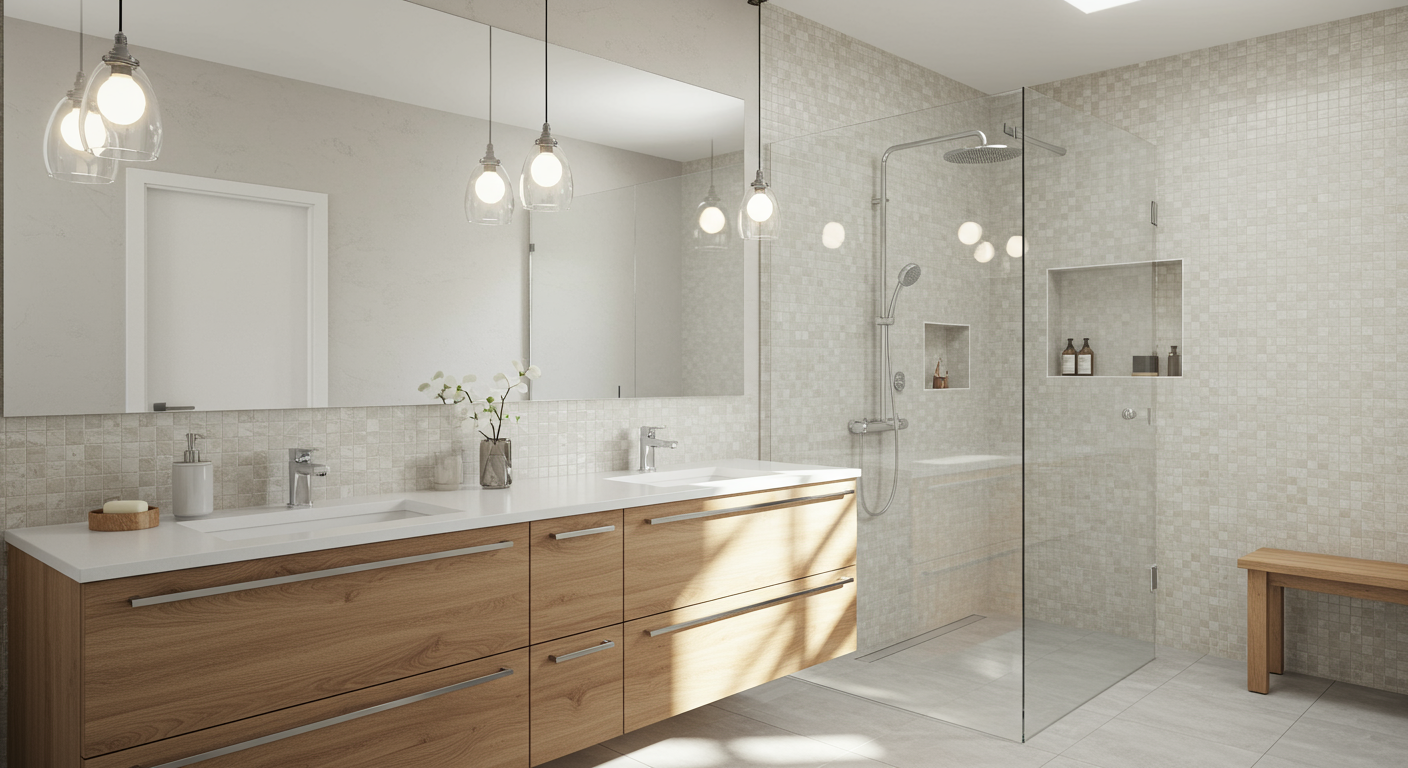
Your bench may be built-in or free-standing. If space is limited in the shower, consider a bench seat that can flip up when not in use. Waterproof seat cushions can help soften a hard surface.
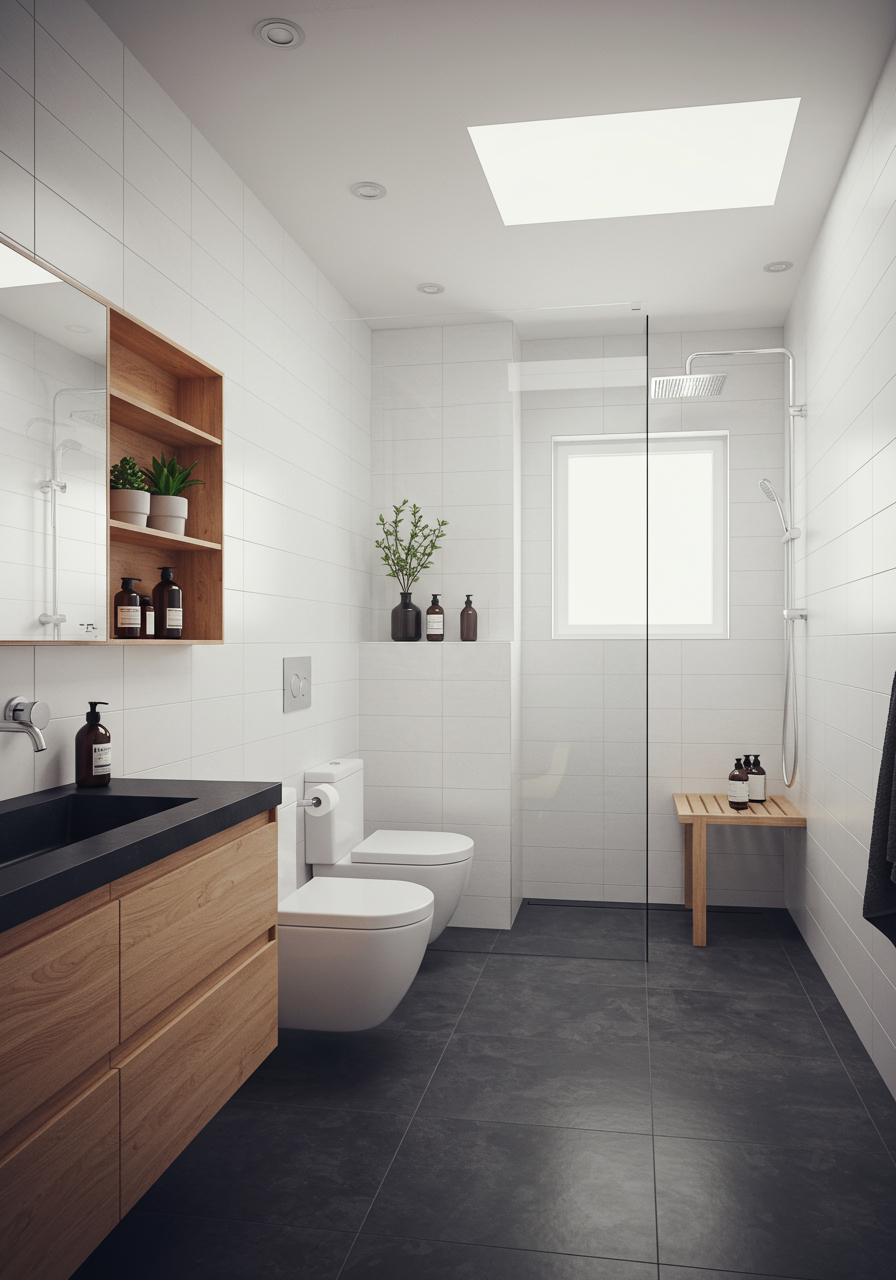
2. Install a Handheld Shower Head
Handheld shower heads are easily adjustable for height and, when placed adjacent to your shower bench, enable you to wash up while seated.
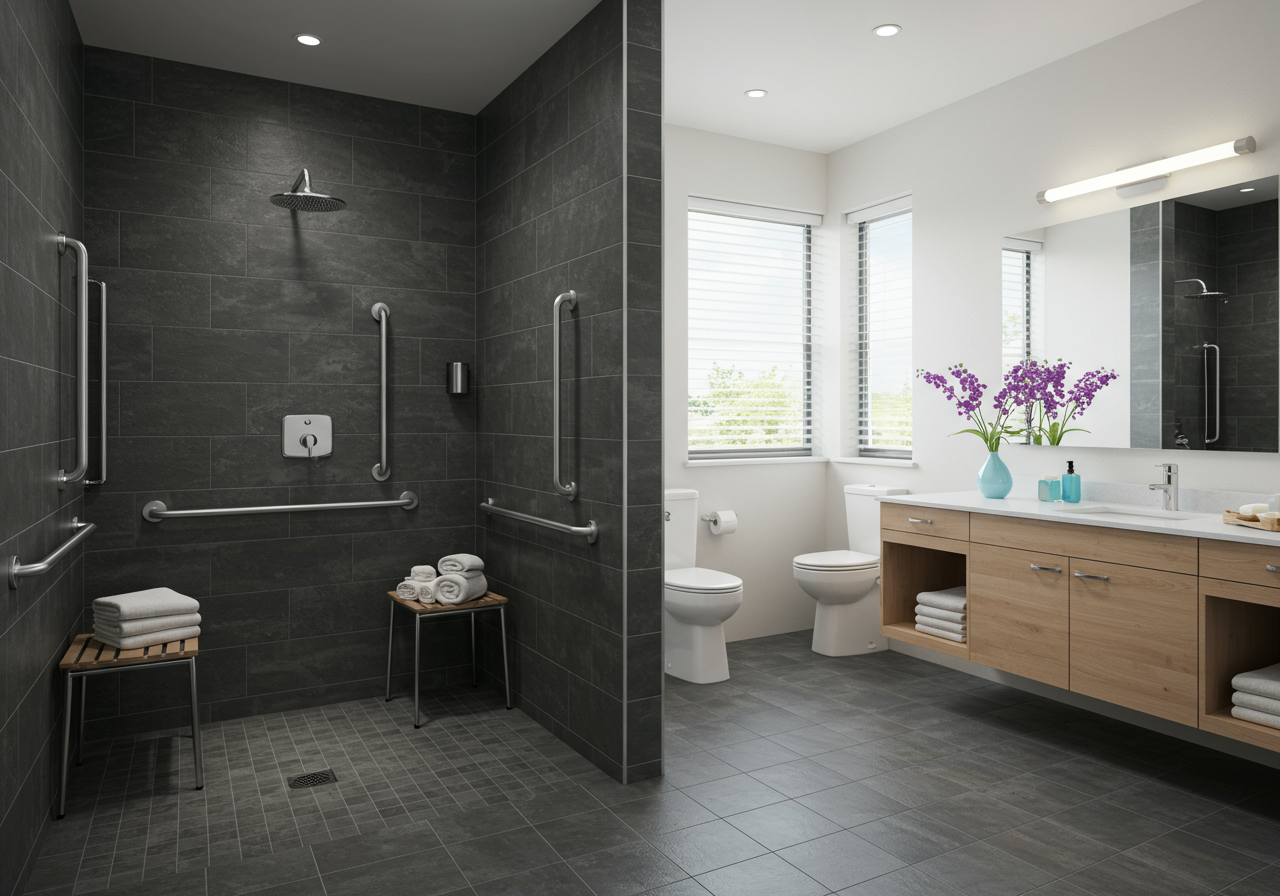
3. Add Grab Bars in the Shower
Sturdy grab bars provide something for you to hold on to as you’re entering and exiting the shower or sitting down on a shower bench or seat. Install one on the outside of your shower and on each of your interior walls so you can safely navigate the space.
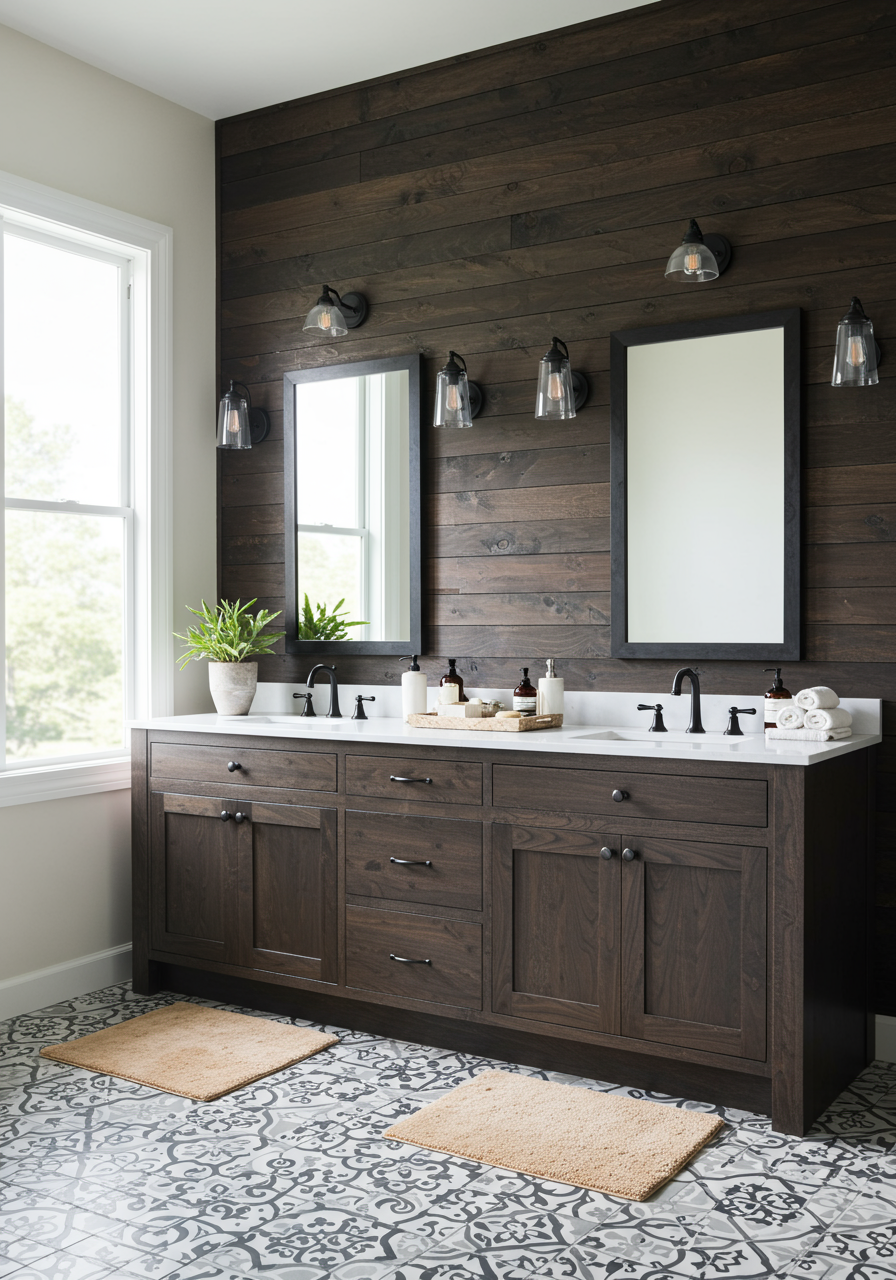
4. Increase the Height of Your Vanity
The standard vanity height is 31½ inches (not including your countertop). This isn’t high enough for some homeowners. Raising the cabinet height to 34½ inches (this will reach standard kitchen counter height, including a 1½ inch countertop) can prevent you from having to hunch over as you’re washing up.
There are two exceptions to increasing the vanity height. If you’re more comfortable with the standard vanity height, don’t increase it. Or if you want to make your vanity wheelchair-accessible, choose a counter height of 34 inches maximum, as specified in the American Disabilities Act guidelines.
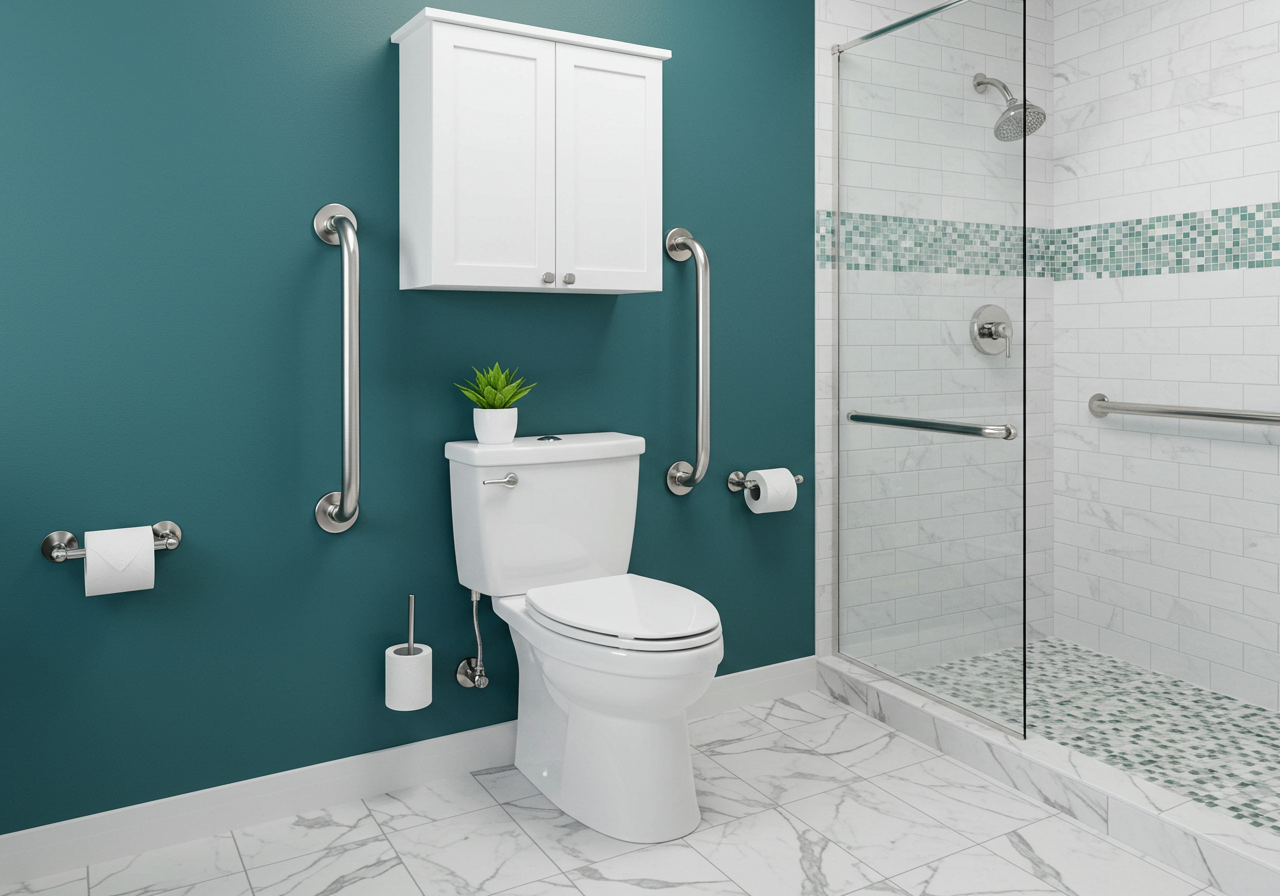
5. Buy a Comfort-Height Toilet
A wise way to age-proof your bathroom is by buying a a slightly taller toilet. Most toilets are less than 16 inches high. Comfort-height toilets are 17 to 19 inches high, which can make sitting and standing much easier. This can reduce the strain on your back and knees.
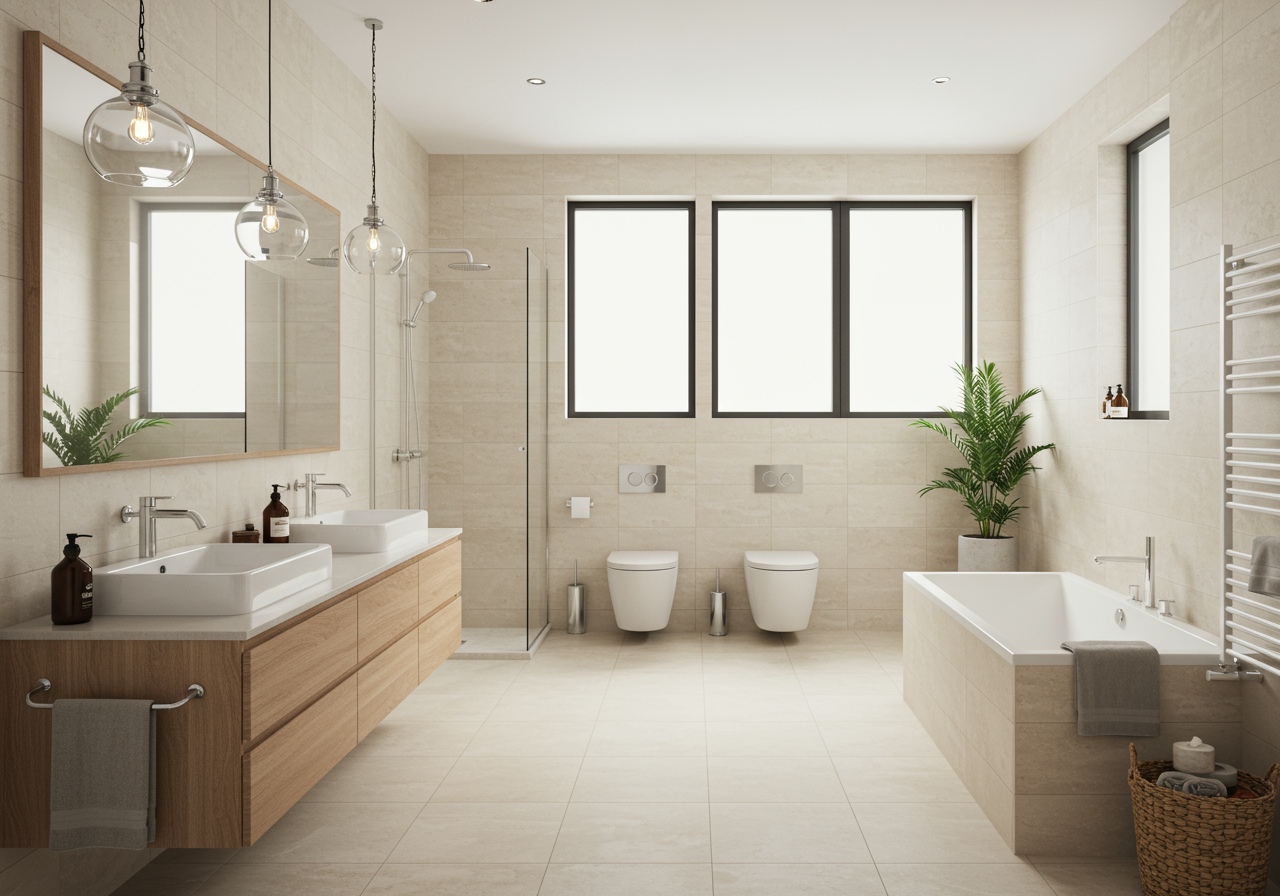
6. Think Twice About Glass
Few things open up a bathroom like glass walls and doors. But keep in mind that shower glass requires upkeep. You need to squeegee it regularly to avoid streak marks. This may make it less convenient for a bathroom designed for aging in place. There are heavy-duty types of shower glass that reduce maintenance, but expect to pay more for it.
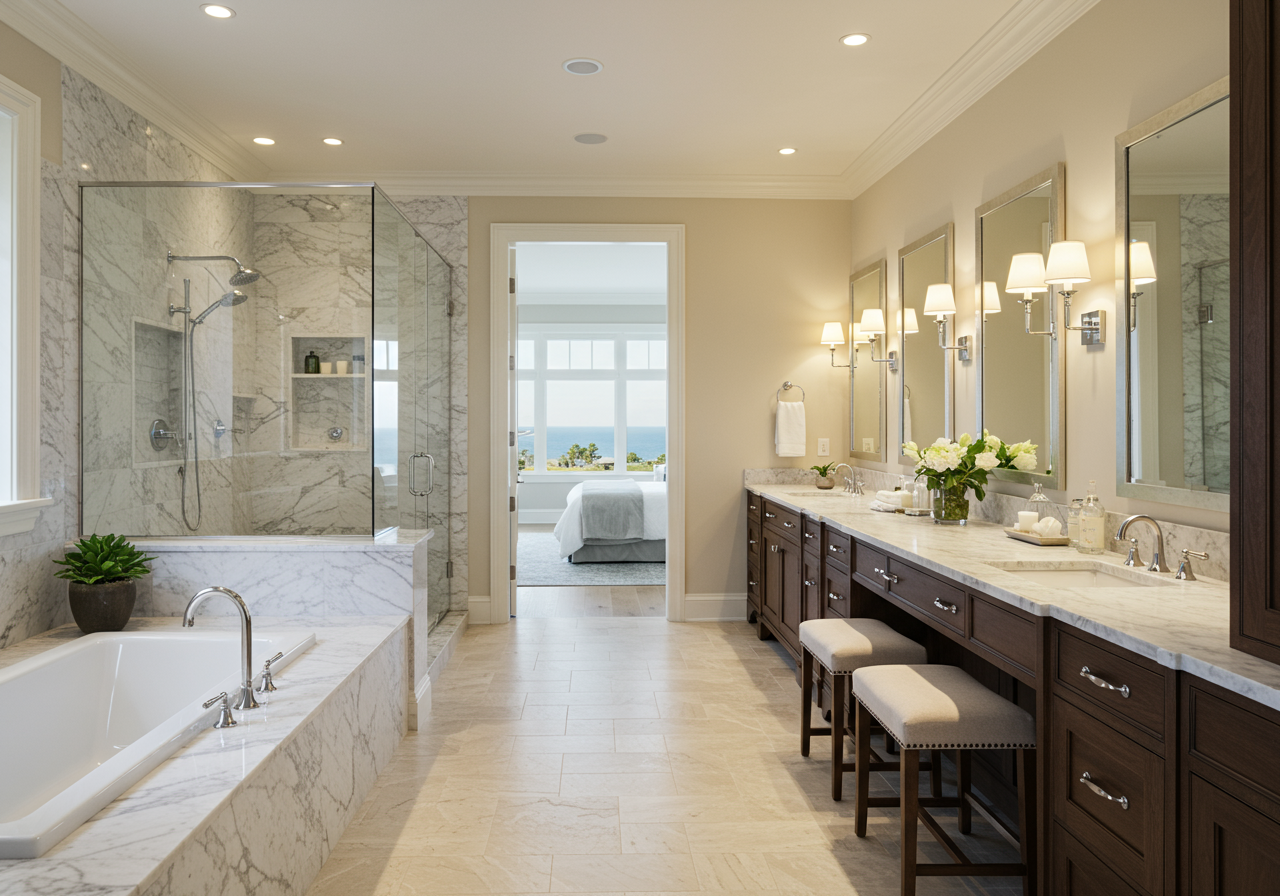
7. Ensure That the Space Is Well-Lit
The better your bathroom lighting is, the less strain on your eyes. You also don’t want to miss any wet spots that can be hidden by shadows. Good lighting comes in many forms, including recessed lighting, vanity lighting, lamps and natural light. You may even consider placing lighting inside an enclosed shower. This isn’t exclusive to when you’re looking to age-proof your bathroom, but is a universal recommendation!
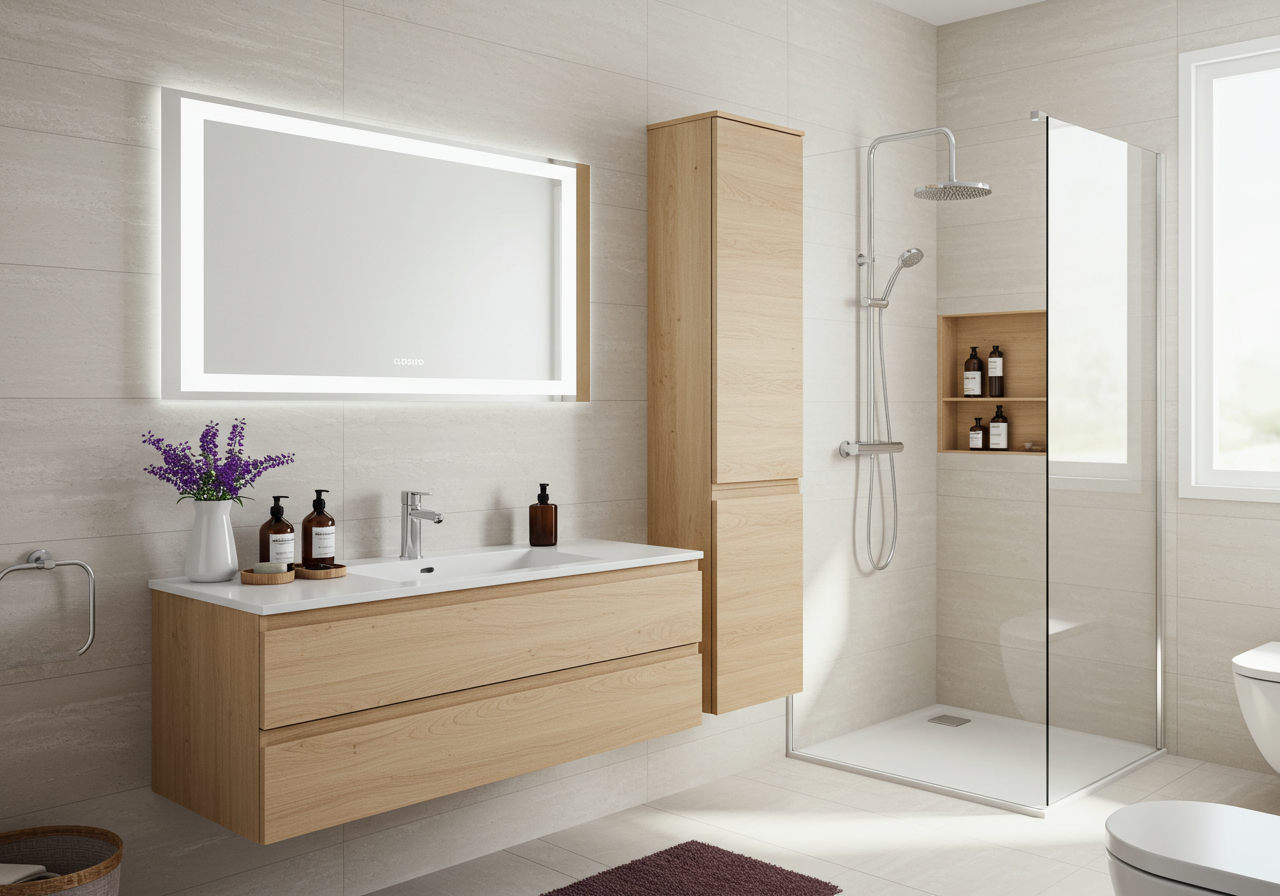
8. Choose Porcelain Wall and Floor Tile
Porcelain can last a lifetime, so chances are you won’t have to replace it as you get older. It’s also perhaps the easiest surface to clean. Water and a rag normally do the trick. If you’re concerned about grout, look for porcelain tile with a rectified edge. Finely cut edges allow for thin grout joints (as little as 1/16 inch in some styles). You can purchase a presealed grout as well.
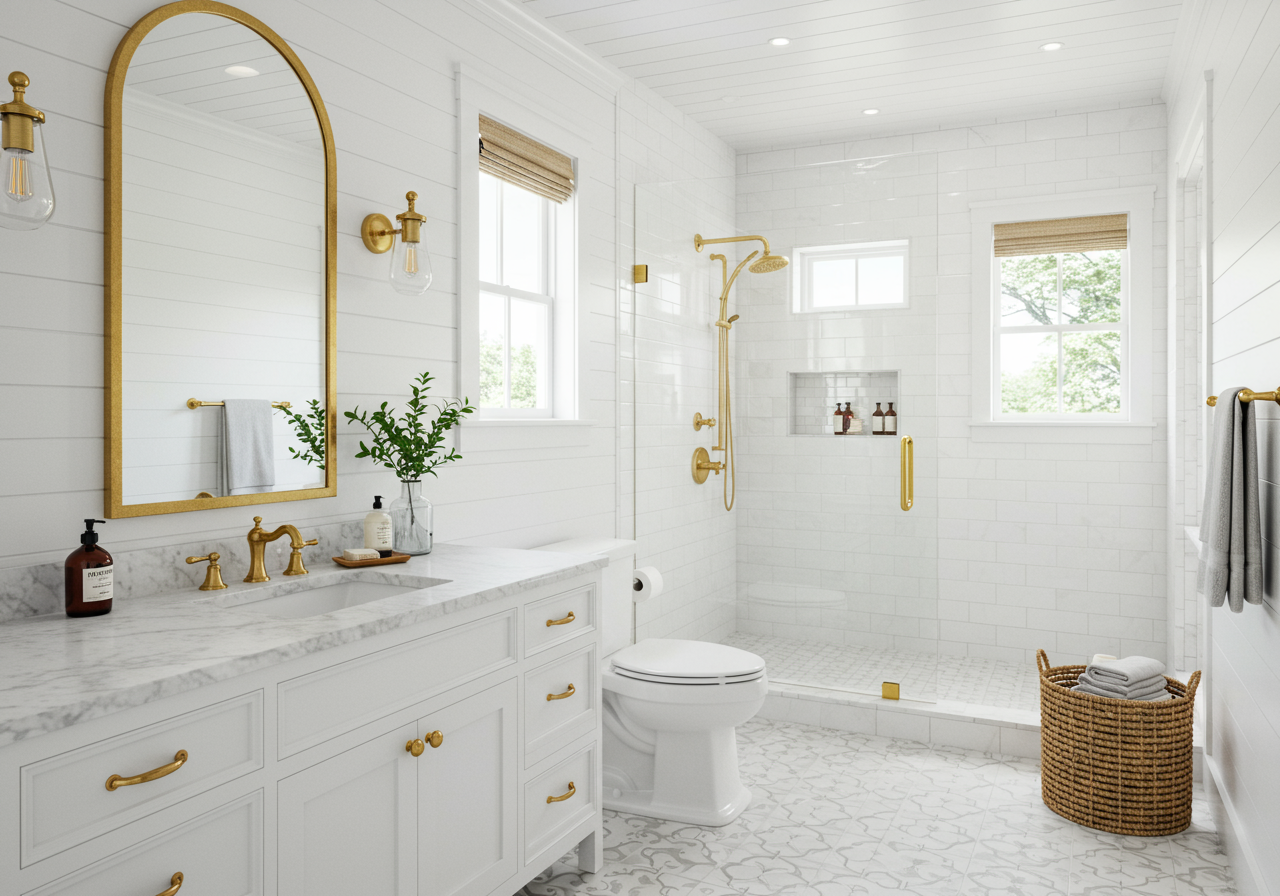
9. Look for Textured Flooring
No matter which kind of flooring you decide to put in your bathroom, choose one that has high slip resistance. A slick tile can increase the likelihood of an injury from a fall. You can spot a floor with good slip resistance by looking for grooves or feeling for texture. Generally speaking, the more textured a floor is, the higher its slip resistance. When looking to age-proof your bathroom, this is an important factor consider.
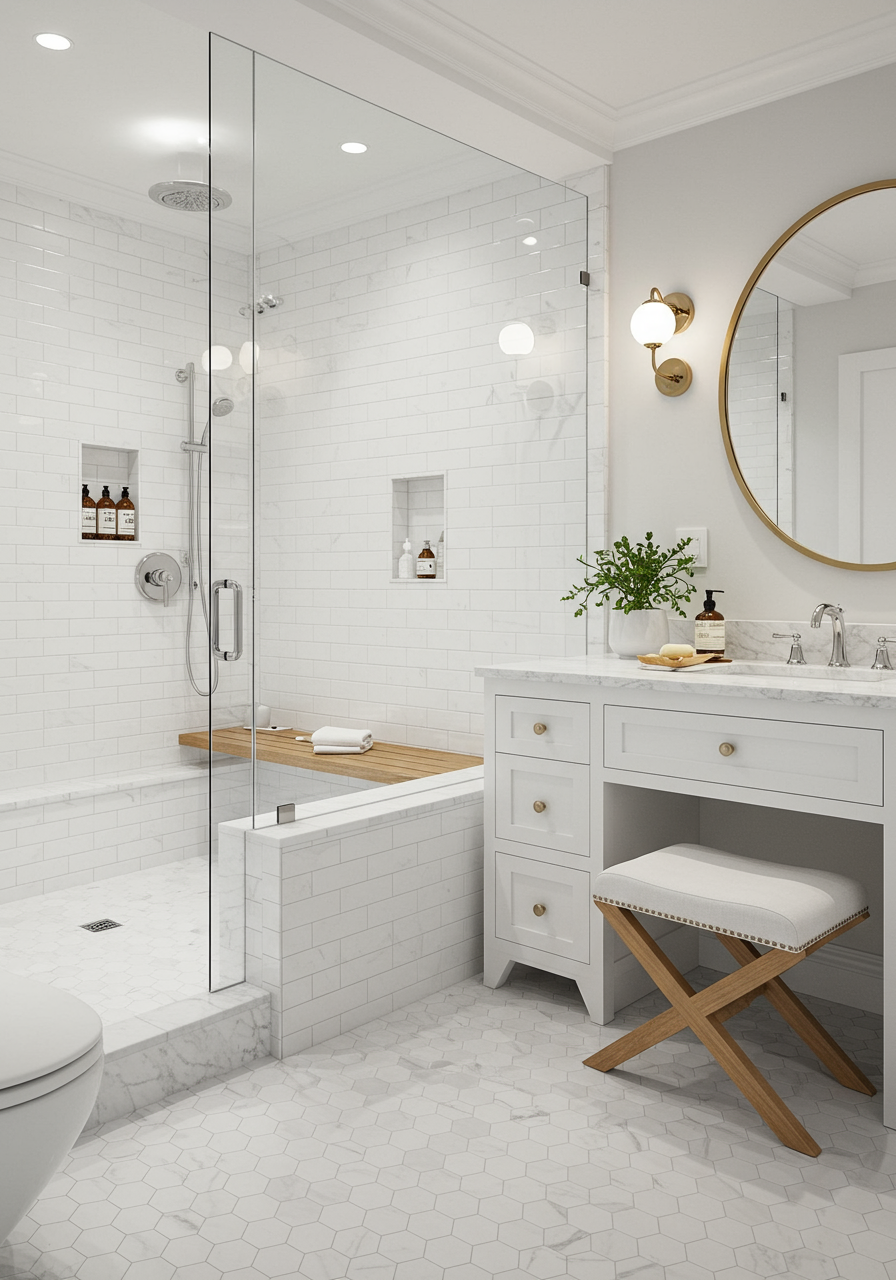
There are ways to measure a floor’s slip resistance. Tile, for example, is rated by measuring the coefficient of friction. A flooring material’s slip resistance can normally be found on the manufacturer’s website.
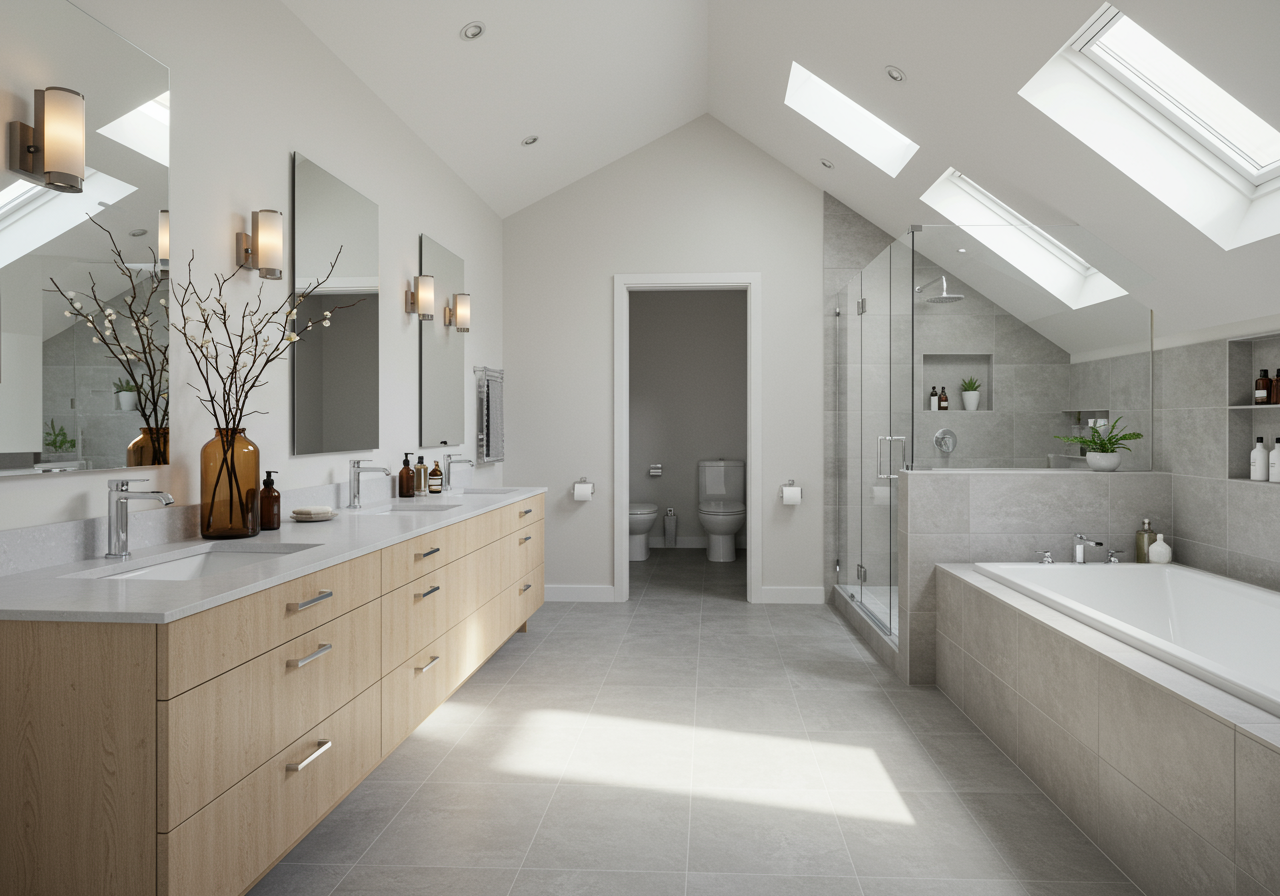
10. Go With a Curbless Shower Entry
A curbless shower entrance minimizes your risk of tripping over a step as you enter the shower. It’s also a wheelchair-accessible feature.
If you forgo a shower step, your shower floor will need to be properly sloped to allow water to drain correctly. If you do include a step, don’t make it large and bulky.
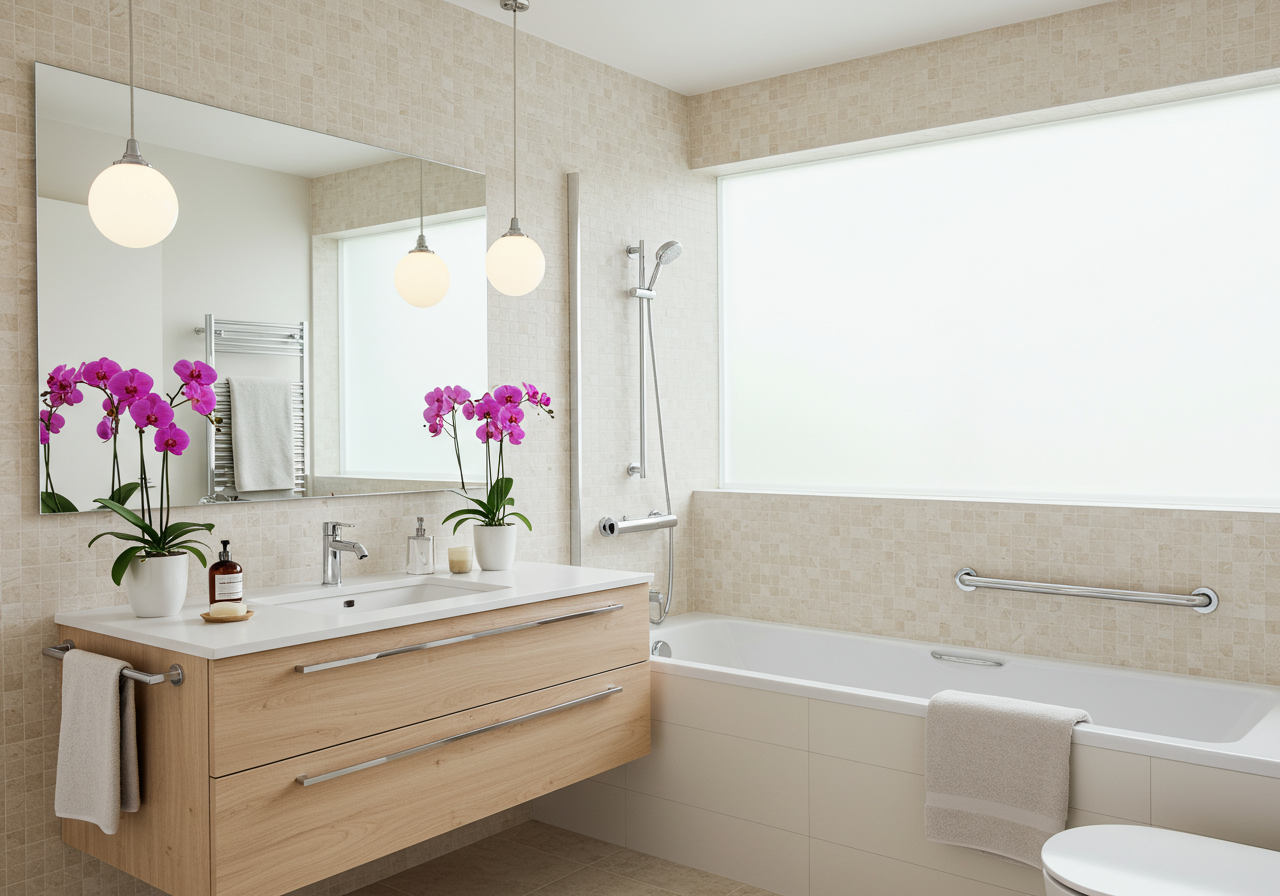
11. Consider the Lip Around Your Tub
Pay attention to the width of the lip on a bathtub. When you have to step over a wide tub surround, the gap between your legs gets larger, which can impair balance and increase the chances of falling. A narrower edge can be better for getting into the tub.

Alternately, some prefer a surround that includes an area wide enough to sit down on so they can sit on the edge and swing their legs over into the tub. This is easiest to do if there is a grab bar installed to provide support.
What universal design features have you installed to make your bathroom more practical for aging in place or accessibility?
